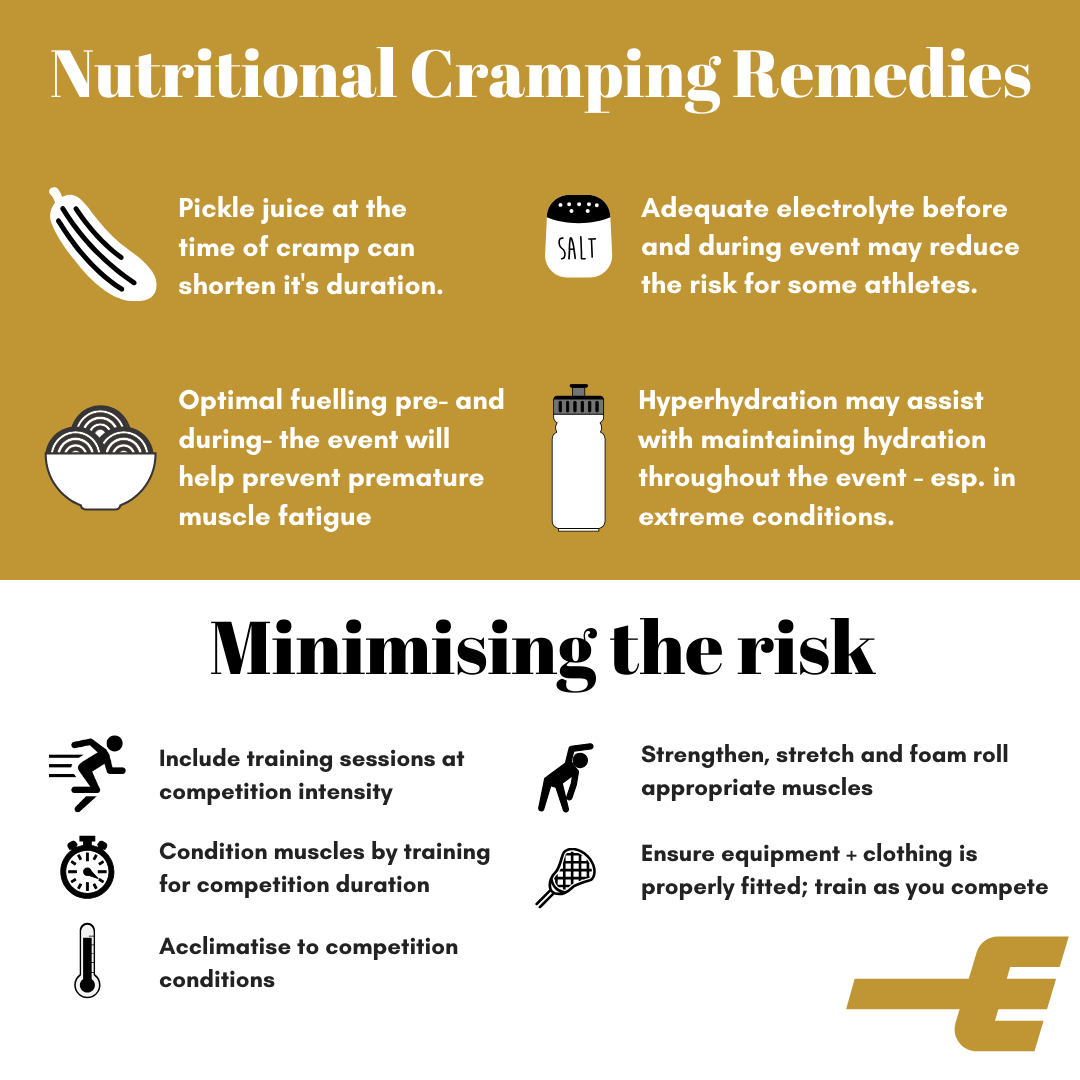
Nothing sparks conversation quite like muscle cramps. Most of us have experienced the sudden, painful sensation of a cramp during training, competition, or even while relaxing. In an instant, your goals can feel out of reach, and you’re left searching for answers to avoid that pain next time.
Before diving into how nutrition can help with muscle cramps, it’s important to know that there are generally two types:
- Cramps in Individual Muscles: These cramps are quick and usually affect specific muscles, like the quads or calves.
- Whole Body Cramps: Thankfully, these are rare.
When athletes talk about cramps, they often mean the individual muscle cramps that occur at the end of a competition or shortly after finishing. These are known as Exercise-Associated Muscle Cramps (EAMCs).
While experts still debate the exact causes of EAMCs, we do know they result from a mix of different factors, both inside and outside the body. They aren’t caused by just one thing.
Recent research suggests that EAMCs may be linked to neuromuscular fatigue, meaning that the longer and harder you push yourself, the more likely you are to cramp. A study with Ironman athletes found that specific risk factors for cramping include:
-
- Racing at a higher intensity or for a longer time than usual.
- Being too aggressive with your pacing.
- Trying an activity you’re not trained for, like a cyclist competing in a triathlon without proper swimming or running training.
The Fastest Way to Relieve a Cramp
The quickest and safest way to ease an active cramp isn’t fancy—it’s gentle stretching. This can be done on your own or with help from a trainer or physio.
What About Pickle Juice?
Research has shown that drinking pickle juice right when a cramp starts can relieve it about 45% faster than just drinking water. This effect isn’t due to hydration or electrolytes but is likely because of the vinegar in pickle juice. The strong taste stimulates the nerves in your mouth, which helps relax the muscles that are cramping. For most people, about 1ml of pickle juice for every kilogram of body weight is enough to stop a cramp quickly.
Keep in mind that pickle juice is not a prevention method; it’s only effective after a cramp begins. After using it, focus on rehydrating and refueling your body.
Other Nutritional Tips
- Fueling: Make sure to eat enough carbohydrates in the days leading up to and during your event. This can help reduce your risk of cramping and combat muscle fatigue.
- Electrolytes: While evidence is mostly anecdotal, adding extra salt before and during your competition may help prevent cramps. Eating salty foods and drinking electrolyte beverages can help you stay hydrated. Magnesium may also be beneficial.
- Hyperhydration: This means drinking more fluids than your body typically holds, which can be useful in hot or humid conditions. Effective methods include:
- Consuming high doses of sodium to draw more fluids into your muscles.
- Using glycerol, a supplement that can enhance fluid absorption.
- Drinking specialized products that use resistant starch to increase fluid absorption.
Reducing Your Risk of EAMCs
As mentioned earlier, fatigue is a major risk factor for EAMCs. Here are some tips to help minimize this risk:
- Simulate Competition Conditions: Train at the same intensity and duration as your upcoming event to prepare your body.
- Mix Up Your Training: Include different activities within the same training session to help your body adapt to fatigue.
- Strengthen and Condition Muscles: Focus on mobility, stretching, foam rolling, and plyometric exercises to improve muscle resilience.
- Acclimatise to Conditions: Prepare for the specific weather and environment of your event, as hot or cold conditions can increase cramping risk.
- Use Proper Gear: Ensure that your equipment, such as shoes or bike setups, is similar to what you’ll use in competition. Working in a cramped position can increase cramping risk.
A note on whole body cramps:
Whole body cramps should be treated differently. These cramps may be related to issues with hydration and electrolytes. Ensuring you consume enough fluids and sodium before an event can help prevent and treat these painful cramps.

So, it appears I have just written an article that didn’t have much to do with nutrition after all!
While hydration and electrolyte balance are not the main causes of EAMCs, they are still crucial for optimal performance. Staying well-hydrated and eating enough carbohydrates before and during an event can help prevent muscle fatigue and reduce cramping risk.
Although science hasn’t answered all our questions about cramps yet, one thing is clear: well-trained, well-fueled, and well-hydrated athletes are less likely to experience cramping on event day. Need support in achieving this? Reach out to our friendly team below to discuss how:
REFERENCES
Miller KC, McDermott BP, Yeargin SW, Fiol A, Schwellnus MP. An Evidence-Based Review of the Pathophysiology, Treatment, and Prevention of Exercise-Associated Muscle Cramps. J Athl Train. 2022 Jan 1;57(1):5-15. doi: 10.4085/1062-6050-0696.20. PMID: 34185846; PMCID: PMC8775277.


